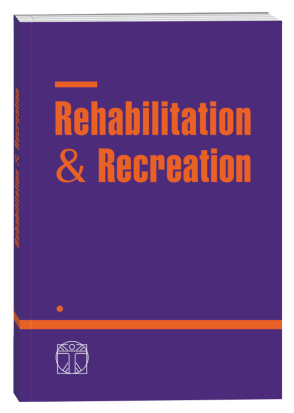USING WATER POLO ELEMENTS IN SWIMMING TRAINING IN PRIMARY AND SECONDARY SCHOOL AGE (METHODICAL AND CONTENT ASPECTS)
DOI:
https://doi.org/10.32782/2522-1795.2023.15.22Keywords:
swimming, swimming styles, water polo, training, skills, technique, primary and secondary school age.Abstract
Taking into account the importance of school-age children and adolescents acquiring swimming skills for the harmonious formation of their personality, the authors of the article proposed to include in the content of swimming training as part of extracurricular physical education and recreational work and initial swimming training at youth sports schools the teaching of individual elements of water polo, because this can significantly improve effectiveness of learning swimming skills by school pupils, and to expand their range. The relevance of the article is determined by the complete absence of domestic scientific and methodological developments of content and conducting swimming training with elements of water polo in primary and secondary school age. The purpose of the article is to acquaint school physical education teachers and children’s swimming coaches with methodical and content aspects of using elements of teaching the basics of water polo in children and adolescents swimming training. Material. The research used method of collecting and processing information based on the study of scientific and methodological literature, and methods of analysis and synthesis, classification and typology, as well as pedagogical observation. Results. The article provides methodical requirements and gives a detailed description of the content aspect of teaching schoolchildren who do not yet have the skills of various swimming styles. This aspect includes general development exercises, exercises for special physical training, exercises for mastering the aquatic environment, for learning easy ways of swimming, jumping into the water, exercises for mastering the technique of various swimming styles, and mobile games in the pool. The authors describe the stages and various options for teaching school pupils the technique of crawl, breaststroke and butterfly. The article presents the general content of blocks of exercises for breathing technique, for a comprehensive introduction to the technical elements of various swimming strokes, for mastering the technique of leg and arm movements and their coordination with breathing, for coordination of breathing technique, arm and leg movements, and swimming with full coordination of all movements and breathing, for mastering the technique of starts and turns, to general improvement of the technique of various swimming styles. The performance of these exercises is supplemented by mastering the elements of water polo varieties of sports swimming styles – water polo front crawl and backstroke, trudgen, sidestroke, as well as learning the elements of swimming on the spot, "walking in the water", techniques of raising the body above the water surface, jumping out of the water, starting for a jerk, stopping, turning. Conclusions. Thus, using water polo elements in swimming training in primary and secondary school age is aimed at more effective mastering the swimming skills by school pupils and expansion of their range. Proposed innovations in swimming training expand and deepen the usual swimming skills of school pupils, develop a quick and correct reaction, and cultivate a sense of confidence and freedom in children and adolescents.
References
Дубовис М. С., Короп Ю. О. Ігри та ігрові вправи для початкового навчання плаванню: посібник для вчителя. Київ: Радянська школа, 1991. 143 с.
Криводуд Т. Є. Навчання плаванню дітей дошкільного та молодшого шкільного віку: навч.-метод. посібник. Суми: Сумський державний педагогічний університет ім. А. Макаренка, 2003. 64 с.
Кругленко А. С., Собко С. А., Квіта С. В. Особливості використання елементів водного поло на заняттях з плавання зі студентами вузів. Veda a technologie: krok do budoucnosti: Materialy 9 Mezinarodni vedecko-prakticka conference (Praha, 2013). Dil 26: Moderni informacni technologie. Telovychova a sport. Praha, 2013. S. 73-75.
Лашко В. П., Сідаш О. О., Астахов В. А. Плавання. Теорія та методика: навч.-метод. посібник. Дніпропетровськ: Дніпропетровський державний інститут фізичної культури та спорту, 2015. 189 с.
Ображей О. Є. Технологія прискореного навчання плавання молодших школярів в умовах літніх оздоровчих таборів: дис… доктора філософії. Спец.: 014 – Середня освіта (Фізична культура). Луцьк: Волинський національний університет ім. Лесі Українки, 2021. 312 с.
Ображей О. Є., Маляренко І. В., Кольцова О. С., Кедровський Б. Г. Структура процесу початкового навчання плавання молодших школярів у літньому оздоровчому таборі. Фізичне виховання, спорт і культура здоров’я у сучасному суспільстві. 2020. № 1 (49). С. 90-95.
Плавання з методикою викладання: навч.-метод. посібник. Уклад.: М. Ю. Ячнюк, І. О. Ячнюк, Ю. Б. Ячнюк. Чернівці: Чернівецький національний університет, 2020. 216 с.
Сімак Н. Д., Одинець Т. Є. Організаційно-методичні особливості навчання плаванню дітей на етапі початкової підготовки. Науковий часопис Національного педагогічного університету ім. М. П. Драгоманова. Серія 15: Науково-педагогічні проблеми фізичної культури (фізична культура і спорт). 2022. Вип. 10 (155). URL: https://enpuir.npu. edu.ua/handle/123456789/38563.
Черненко Л. П., Куцерда В. В. Фізкультурно-оздоровча та спортивна робота школи та коледжу: посібник. Умань: Видавець «Сочінський М. М.», 2019. 58 с.
Chaplins’kyy M., Briskin Yu., Ostrov’ska N., Sydorko O., Ostrov’skyy M., Pityn M., Polehoiko M. Evaluation of the training level of water polo swimming players (13-15 years old). Journal of Physical Education and Sport. 2018. Vol. 18, supplement issue 1. P. 356-362.
Downloads
Published
How to Cite
Issue
Section
License

This work is licensed under a Creative Commons Attribution-NonCommercial-NoDerivatives 4.0 International License.











